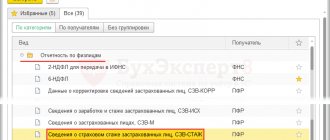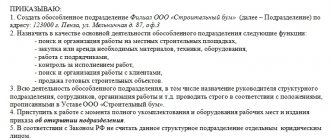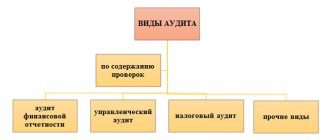Initial stage of joining
A merger is a form of reorganization in which one or more organizations cease to exist as separate legal entities and become part of another company.
In what follows, for simplicity, we will refer to the affiliating organization as the “main” organization. The starting point is for the owners to make an appropriate decision. It must be sent to the “registering” Federal Tax Service within three working days, along with a written message about the start of the accession. Having received these papers, inspectors must make an entry in the state register stating that the companies are in the process of reorganization. Officials are given three working days for this.
In addition, companies are required to inform the Pension Fund and the Social Insurance Fund office in writing about the upcoming accession. This should also be done within three working days (clause 3 of part 3 of article 28 of the Federal Law of July 24, 2009 No. 212-FZ).
Then twice, at intervals of a month, a notice of the reorganization is supposed to be published in special publications. And also, within five working days from the date of filing the application with the Federal Tax Service, notify all known creditors about the initiated process (Article 13.1 of the Federal Law of 08.08.01 No. 129-FZ “On State Registration of Legal Entities and Individual Entrepreneurs”).
Next, you should prepare a new version of the constituent documents of the company, which is being joined by another legal entity. At this stage, it is also necessary to conduct an inventory of the property and obligations of all participants - and the joining organization. This is stated in paragraph 2 of Article 12 of the Federal Law of November 21, 1996 No. 129-FZ “On Accounting”.
Typical mistakes during reorganization
Mistake #1. Accounting during reorganization in the form of separating the difference between the amount of the value of property rights contributed as payment for property and the nominal value of the received shares, shares or shares as profit/loss.
For accounting purposes, the difference between these indicators is not recognized as profit or loss of the legal entity.
Mistake #2. Failure to reflect business transactions in the period of time between the preparation of the separation balance sheet for the purpose of reorganization and the date of making the corresponding entry in the Unified Register.
It is the responsibility of the reorganized company to reflect all business transactions in a given period of time, since legal entities participating in the reorganization are required to know about the changes that have occurred in the enterprise.
Transfer deed
After the steps described above, accountants must draw up a transfer deed. The date of this document can be any at the discretion of the founders. However, it is better to date the transfer act at the end of the quarter or year - this is precisely the recommendation contained in paragraph 6 of the Instructions for the preparation of accounting records during reorganization*.
There are no restrictions on the form of the transfer deed (an example of a transfer deed can be found here). In terms of content, there is only one indication - the act must include “provisions on legal succession” (Article 59 of the Civil Code of the Russian Federation). This is information about the amount of receivables and payables and about the property that goes to the “main” company. It is permissible to reflect property either at market or at residual value (clause 7 of the Instructions for the formation of accounting records during reorganization).
In practice, the deed of transfer is most often drawn up in the form of an ordinary balance sheet and transcripts are attached for each line. Inventory sheets can be used as transcripts. There is another option: abandon the balance sheet form, and simply list all types of assets and liabilities (fixed assets, intangible assets, accounts receivable, etc.) and indicate their value. And in separate appendices, provide lists of objects, debtors, etc.
Valuation of assets and liabilities during reorganization
The value of the property recorded in the separation balance sheet or deed of transfer must agree with that listed in the inventory or transcript thereof. The assessment of the property of the transferring and receiving parties is carried out:
- at residual value,
- at the current market price,
- at the actual cost of inventories,
- at the original cost of the cash investment,
- by another method.
The transfer of property according to the rules of universal succession is not accepted as its sale or as a gratuitous transfer when maintaining accounting (no entries are made). The obligations of the reorganized LLC are shown in the amount reflected in the accounting records of the loan debt (including losses reimbursed to borrowers).
Accounting must contain separate documentation:
- intermediate (drawn up between the day of alienation of the property and obligations of the reorganized LLC and the day of making entries in the Unified State Register of Legal Entities) and
- final reporting (with closing accounts for losses and profits, reflecting the distribution of net profit for the implementation of tasks approved by the founders in the agreement).
If during the period of writing the interim reports the value of the property being surrendered has changed, this must be indicated in the explanatory paper to the report or in a clarification to the separation balance sheet or transfer deed, since the information contained therein will become the basis for entering data on property, obligations and other indicators in introductory note report of the newly created legal entity (the final accounting report will also be considered).
Period until completion of accession
Next you need to collect a package of documents. It consists of a deed of transfer, an application for state registration of the acquiring legal entity, a decision on reorganization, a document on payment of state duty and other papers. The full list is given in paragraph 1 of Article 14 of the Federal Law of 08.08.01 No. 129-FZ.
The package of documents must be submitted to the “registering” tax office and wait for it to make an entry in the Unified State Register of Legal Entities. The appearance of such a record will mean that the company being merged has ceased to exist, and the “main” has begun to operate in a new capacity.
While the waiting period lasts, the joining organization continues to operate. In particular, it calculates wages, depreciation, issues invoices and issues invoices and invoices.
Final financial statements of the acquired company
The organization that joins is required to prepare final accounting reports. Its date is the day preceding the date of entry into the unified state register of the reorganization entry. The reporting includes a balance sheet, profit and loss account, statements of changes in capital and cash flows, explanations and an auditor's report (if the company was subject to a statutory audit).
The final statements will reflect transactions completed during the period from the signing of the transfer deed to the closure of the predecessor organization. In particular, writing off deferred expenses that cannot be transferred to the successor (for example, the cost of a license). As a result of these transactions, the figures in the final balance sheet will differ from the figures in the transfer deed.
Finally, the accountant of the acquiring company needs to close account 99 “Profits and losses”. Profits can be distributed according to the decision of the founders.
After the final reporting, the affiliated organization does not have to submit balance sheets and other documents, because the last reporting period for it is the time from the beginning of the year to the date of reorganization.
As for the “main” organization, it has no obligation to prepare and submit final reports.
Reorganization in the form of transformation
The conditions and scheme of reorganization into the appropriate legal form are approved by the founders and formalized in a decision on transformation. A deed of transfer is required, despite the fact that the owner of the property and the debtor of the obligations remain the same. If the organizational and legal form changes, the details of the transfer of property are prescribed in the transfer deed.
The work of a company in the process of transformation may not stop during the period of reorganization, as of the state date. Upon registration, the amount of net profit must be indicated, and the profit must be distributed among the participants or spent. Such measures are necessary because assets may not change, but liabilities are likely to change.
| Operation | DEBIT | CREDIT |
| by the amount of profit from core activities | 90 s/ac “Profit/loss from sales” | 99 |
| or | ||
| for the amount of loss from core activities | 99 | 90 |
| for the amount of other profit of the company | 91 s/account “Balance of other income and expenses” | 99 |
| or | ||
| for the amount of loss from non-core activities and from non-operating expenses minus received non-operating income | 99 | 91 |
| for the amount of unforeseen expenses | 99 | 99 |
| for the amount of income tax (before the date of state registration) | 99 | 68 |
| for the amount of permanent tax liabilities | 99 | 68 s/ch “Income tax” |
| by the amount of net profit (which will be divided between the participants or spent) | 99 | 84 |
| by the amount of net loss (attributable to the decrease in net profit of previous periods) | 84 | 99 |
| for the amount of accrued dividends | 84 | 75 |
| the amount of accrued dividends (if they are accrued to company employees) | 84 | 70 |
Accounting statements of the “main” company
An organization that merges another legal entity does not have to submit its opening balance sheet. Instead, the successor will have to prepare interim accounts as of the date of termination of the predecessor company's operations. This follows from paragraph 23 of the Instructions for the formation of accounting records during reorganization.
The lines of the interim balance sheet will contain the sum of the indicators of the final balance sheet of the affiliated organization and the balance sheet of the “main” company as of the date of making an entry in the Unified State Register of Legal Entities. The exception is mutual settlements between the predecessor and the successor - for example, when one of them was a borrower and the other a lender. Such indicators are not summed up, since if the debtor and creditor coincide, the obligation terminates.
In the interim income statement, the successor does not need to combine its data with that of its predecessor. The explanation is simple: these figures refer to the period before the reorganization, and then there were two (or more) legal entities independent from each other.
Particular attention should be paid to the authorized capital of the successor organization. If it is less than the sum of the capitals of the “main” and acquired companies, then the difference is reflected in the balance sheet in the line “Retained earnings (uncovered loss).” If the legal successor’s capital is greater than the amount of capital before the reorganization, such a difference does not need to be shown in the balance sheet. In both cases, the accountant does not make any entries.
The introductory reporting must be submitted to the Federal Tax Service either immediately after registration or at the end of the current quarter (depending on what is more convenient for “your” inspector).
The concept of reorganization, types of reorganization
There are different types of reorganization:
- merger (creation of one LLC, termination of several LLCs);
- transformation (creation and completion of one LLC);
- spin-off (creation of one or several LLCs);
- merger (termination of activities of one or several LLCs);
- division (creation of several LLCs and closure of one LLC).
Reorganization in the form of separation and division presupposes the existence of a documented decision of the founding legal entities or the authorized body of the legal entity (the powers are confirmed in the constituent documentation); sometimes - a court decision or conclusion of government agencies. When reorganizing in the form of transformation, affiliation or merger, it is necessary to obtain government approval. bodies having powers, in cases approved by law.
In case of merger, spin-off, division, transformation, the reorganization process is considered completed from the date of the state registration. registration of new legal entities; and upon merger - from the date of adding an entry in the Unified State Register of Legal Entities about the termination of the work of the affiliated LLC. In both cases, the final account is drawn up the day before the recordings are made. reporting.
"Primary" in the transition period
After reorganization, the successor company “inherits” the contractual relations of the joining legal entity. But the agreements themselves are still concluded on behalf of the predecessor. Is it necessary to sign additional agreements to replace parties to the transaction? Or can you simply send information letters to counterparties that indicate the name and details of the legal successor?
In our opinion, there is no need for additional agreements. Indeed, on the basis of paragraph 2 of Article 58 of the Civil Code of the Russian Federation, all rights and obligations of the affiliated company under the transfer deed are transferred to the acquiring organization. This rule also applies to contractual relationships. Thus, an extract from the Unified State Register of Legal Entities and a transfer deed are sufficient for the assignee to continue cooperation with suppliers and buyers of the affiliated organization.
However, many companies still renew contracts. This option requires additional time and labor, but allows you to prevent conflicts with both counterparties and tax authorities.
Invoices, certificates of work performed and invoices before the day of reorganization are issued on behalf of the predecessor, on the date of reorganization and further - on behalf of the successor.
Reorganization in the form of division
Costs before the date of adding the entry to the Unified State Register of Legal Entities should be taken into account as non-operating expenses of the company that is being reorganized. Upon completion of the reorganization, the costs will be taken into account by the newly created legal entities. This also applies to reorganization in the form of separation. To prepare the separation balance sheet, the accounting indicators are separated. reporting of the reorganized legal entity (except for data on profits and losses), the accounting records will not contain records about this.
According to information from the separation balance sheet and the final accounting. reporting, an introductory account is drawn up. reporting of all companies that arose after the separation and state day. registration. Two or more legal successors arise, between whom disagreements will occur due to the fact that in the period of time between the execution of the transfer deed and the entry into the Unified State Register of Legal Entities, the composition and structure of assets and obligations change, sometimes significantly. Therefore, it is customary to act according to the following scheme:
- As soon as the reorganization is planned, a list of property that will not be sold or alienated in any other way is approved, and the composition of the assets that will be transferred to each of the participating legal entities is identified.
- When the company's operations do not stop, and the division occurs on the basis of industry segments (or geographic ones), the property prepared for transfer is determined as a percentage of the total (the full amount of inventory valuation or the number of objects).
- The equity capital of the company to be divided is distributed only by decision of the meeting involved in the reorganization process. In a joint-stock company, reserve capital (intended for paying dividends) is distributed depending on the number of shares, taking into account the possibility of conversion.
- obligations are subject to division according to the principle of their ownership.
- Money and other highly liquid assets are distributed according to pre-agreed percentages.
Example of accounting for reorganization in the form of merger
Conditions:
- For clarity, let’s call the reorganized company K1, and the merged company K2.
- The authorized capital of K2 on the day of reorganization is 155 thousand rubles.
- K2 accepted an advance for the future supply of goods (266 thousand rubles), paid VAT (43 thousand rubles).
- K1 received goods worth 155 thousand rubles from K2 under the transfer deed. excluding VAT.
- K1 received accounts payable equal to the advance accepted by K2 (266 thousand rubles).
If goods are transferred from K1 under a transfer act to K2, they are accepted for accounting at the cost that was indicated in the accounting of K2, if they were valued at actual cost. When transferring goods, fixed assets, intangible assets, upon the purchase of which K1 accepted VAT for deduction, this amount of VAT will not be restored and paid to K1 and K2.
The loan debt to the purchaser of goods must be taken into account in the amount that was recorded in K2 accounting. After the goods are shipped to the buyer, K1 recognizes revenue and takes into account VAT. The legal successor is subject to deduction of VAT transferred to the budget by the reorganized enterprise from advances and other payments on account of future supplies of goods.
Proceeds from the sale of goods (minus VAT) are taken into account in sales income for the purpose of paying income tax.
For K1 and K2, expenses will be considered the residual value of property, rights that can be valued in monetary terms (determined according to the tax accounting information of K1 on the day of transition from K1 to K2), and obligations transferred by succession. K1 has the right to reduce income from the sale of goods by the cost of goods sold transferred from K2.
Accounting entries for the acquired enterprise (at the time of reorganization, K1 received an advance for the goods and paid VAT, K1 transferred goods to K2 excluding VAT and the loan debt in the amount of the advance):
| Operation | DEBIT | CREDIT | Amount (thousand rubles) |
| balances on the goods account were increased | 41 | – | 155 |
| balances on the accounts payable to customers were increased | – | 62-2 | 266 |
| VAT account balances increased | 76/AB | – | 43 |
| cash account balances increased | 51 | – | 223 |
| balances on the authorized capital account were increased | – | 80 | 155 |
| revenue from the sale of goods is recognized | 62 s/sch “Settlements with buyers and customers” | 90 s/c “Revenue” | 266 |
| written off cost of goods sold | 90 s/c “Cost of sales” | 41 | 155 |
| VAT is charged on proceeds from the sale of goods | 90 s/c “VAT” | 68 | 43 |
| accepted for deduction of VAT paid by K2 on the advance amount | 68 | 76/AB | 43 |
| the advance amount is offset against the buyer's debt for goods | 62-2 | 62 s/sch “Settlements with buyers and customers” | 266 |
Example of accounting for reorganization in the form of spin-off
Conditions:
- The OJSC is reorganizing in the form of spinning off a closed joint stock company.
- The authorized capital of the CJSC is 2,420,000 rubles.
CJSC will be transferred:
- 780 thousand rubles in cash,
- loan debt 320 thousand rubles,
- exclusive rights to a trademark (45 thousand rubles),
- debt on Debit for goods supplied (RUB 740 thousand),
- securities of OJSC (2) for 560 thousand rubles.
The rights to the assets will be transferred as a contribution by the OJSC to the authorized capital of the CJSC, 100% of which is owned by the OJSC. Reorganization in the form of a spin-off involves the purchase by the reorganized LLC of securities (shares, shares) of the spun-off legal entity, their value is considered equal to the value of the net assets of the spun-off enterprise on the state day. registration.
The transfer of property rights (the property constitutes the authorized capital of the spun-off enterprise) is carried out as a contribution to the mouth. capital of the spun-off enterprise without changing the mouth. capital of the reorganized legal entity, i.e. transfer to accounting reporting is reflected as a cash investment and is accounted for at initial cost).
- Net assets:
780 thousand + 740 thousand + 560 thousand + 45 thousand – 320 thousand = 1,805,000 rubles.
- Net assets minus the amount of authorized capital:
1,805 thousand - 2,420 thousand = 615 thousand rubles - will be reflected as an uncovered loss.
Accounting entries:
| Operation | DEBIT | CREDIT | Amount (thousand rubles) |
| the transfer of money from the joint-stock company is reflected | 76 “Settlements with various debtors and creditors” | 51 “Current accounts” | 780 |
| transfer of receivables reflected | 76 | 62 “Settlements with buyers and customers” | 740 |
| transfer of shares reflected | 76 | 58 social account “Units and shares” | 560 |
| transfer of the exclusive right to the trademark is reflected | 76 | 04 | 45 |
| transfer of loan debt is reflected | 66 “Settlements for short-term loans and borrowings” | 76 | 320 |
| financial investments in shares of the company are reflected | 58 social account “Units and shares” | 76 | 1 805 |
The difference between the value of rights to property contributed as payment for property and the nominal value of the acquired securities (share, share) is not considered profit or loss.
Who submits declarations for the affiliated company
Ideally, the joining company should report all taxes before making an entry in the state register. If she doesn’t make it in time, then the very next day after the reorganization, the Federal Tax Service Inspectorate at the place of its registration will refuse to accept declarations. In this case, all tax reporting for the predecessor must be submitted by the successor organization to its inspectorate.
Accountants and inspectors often doubt: does the assignee need to combine the indicators for the last tax or reporting period into one declaration? Or submit two declarations - one for yourself, the other for the affiliated organization?
In general, indicators are not combined. This means that the legal successor should submit a separate declaration for the affiliated legal entity to its inspectorate. In the event that, after the reorganization, errors of the predecessor are discovered, the successor must pass for the annexed one.
VAT is special. Officials say that when reporting for the last quarter, the successor needs to combine the transactions that it made itself and those made by the acquired company. So, if the merger took place on December 31, and the predecessor did not report on VAT for the fourth quarter before this date, then the successor, until January 20 of the next year inclusive, submits not two, but one declaration. It reflects the indicators for both legal entities (letter of the Ministry of Finance of Russia and the Federal Tax Service of Russia dated 03/09/11 No. KE-4-3 / [email protected] ). But this conclusion seems doubtful to us, since combining indicators can lead to confusion. We believe that if the successor files two VAT returns, this will not lead to conflicts, but, on the contrary, will help to avoid troubles.
Please note: the deadline for submitting declarations will not be shifted due to the reorganization. For example, for income tax for the year, the assignee is required to report no later than March 28 of the following year. In this case, the report must be submitted both for yourself and for your predecessor.
If the debtor joined the creditor
It happens that the merged company is a debtor, and the “main” company is a creditor. Then, after the reorganization, the creditor and debtor become one, and the debts are automatically repaid.
Does the successor company have taxable income in the amount of the predecessor's debt? Two years ago, officials answered this question positively (letter of the Ministry of Finance of Russia dated 10/07/09 No. 03-03-06/1/655). But then they changed their point of view and began to argue the opposite: the assignee has no taxable income (letters from the Ministry of Finance of Russia dated July 30, 2010 No. 03-03-06/1/502 and dated November 29, 2010 No. 03-03-06/1/744 ). It is the last conclusion, in our opinion, that corresponds to the law.
The opposite situation is also possible, when the lender joins the borrower. Here, the assignee also does not have to show income in the form of former debt. The Ministry of Finance of Russia agrees with this in letter dated November 15, 2010 No. 03-11-06/2/177. True, it talks about income under a simplified system, but this does not change the essence of the matter.
Let us add that interest on the loan accrued before the reorganization does not need to be adjusted after the merger. This was reported by specialists from the financial department in a letter dated March 14, 2011 No. 03-03-06/1/135.
Accounting for property received upon annexation
The acquiring company must not include in taxable income the value of property received from the predecessor. This is directly stated in paragraph 3 of Article 251 of the Tax Code of the Russian Federation. By the way, this rule also applies to obligations, in particular accounts receivable.
The received objects must be depreciated as follows. For the period up to the month when the merger took place, and for this month itself, depreciation is calculated by the joining legal entity. From the first day of the month following the date of accession, depreciation is charged by the successor.
Tax base for VAT
The successor can deduct the tax that the predecessor paid to its suppliers (or at customs), but did not have time to accept for deduction. To do this, standard conditions must be met. Namely, the presence of an invoice, a “primary” document and registration for use in transactions subject to VAT. In addition, there is an additional condition: the predecessor must transfer documents confirming payment (clause 5 of Article 162.1 of the Tax Code of the Russian Federation).
In addition, the acquiring company has the right to deduct VAT, which the predecessor accrued upon receipt of the advance. The assignee can do this after the sale of the prepaid goods, or after termination of the transaction and return of the advance payment. There is one limitation here - the deduction must be accepted no later than one year from the date of return (clause 4 of Article 162.1 of the Tax Code of the Russian Federation).
Particular attention should be paid to the date of the invoice issued in the name of the predecessor. If the document is dated after the accession, then inspectors will most likely not allow the deduction to be accepted. In such a situation, the accountant can only contact the supplier and ask him to correct the document.
Personal income tax reporting
Merger, like all other forms of reorganization, does not interrupt the tax period for personal income tax. This is explained by the fact that the company is not a taxpayer, but a tax agent. In addition, labor relations with personnel continue, as stated in Article 75 of the Labor Code of the Russian Federation. This means that there is no need to submit any interim reporting on personal income tax during reorganization.
There is one important nuance here: if an employee brings a notice for property deduction, where the predecessor organization is indicated as the employer, the accounting department of the successor company must refuse him. The employee will have to go to the tax office again and get another notice confirming the deduction related to the legal successor. Such clarifications were given by the Russian Ministry of Finance in letter dated August 25, 2011 No. 03-04-05/7-599. In practice, inspectors everywhere follow these clarifications and cancel the deduction provided under an “outdated” notification.
Is it possible to inherit the “simplified”
If the predecessor was on the simplified tax system, and the successor plans to remain on this special regime after the transformation, no applications need to be submitted. If all the conditions necessary for the application of the “simplified tax” are met, the right to it automatically passes to the newly formed company. And although officials do not agree with this (see letter from the Federal Tax Service for Moscow dated 10/08/10 No. 16-15/105637), judges are entirely on the side of taxpayers (resolution of the Presidium of the Supreme Arbitration Court of the Russian Federation dated 06/15/10 No. 563/10).
* Full title of the document: Guidelines for the preparation of financial statements during the reorganization of organizations (approved by order of the Ministry of Finance of Russia dated May 20, 2003 No. 44n).
Insurance premiums and reporting to funds
In connection with the merger, the question inevitably arises: is the successor company obliged to calculate the taxable base for contributions of the “joined” employees from scratch? Or is it permissible to continue the countdown that began before the reorganization?
The amount of insurance premiums directly depends on the answer. If the assignee resets the base, he will automatically lose the right to exempt accruals from contributions that exceed the maximum amount (in 2011 it is equal to 463,000 rubles). If he “inherits” the base, then along with it he will receive the right not to charge contributions for the excess amount.
We believe that the database does not need to be reset, because upon merger, a new legal entity does not arise. But those who choose this route may have to contend with foundation inspectors.
In any case, paying contributions and submitting settlements for them for the predecessor is the responsibility of the successor (Part 16, Article 15 of Federal Law No. 212-FZ).
Answers to common questions
Question No. 1. In the case of reorganization according to the form of division, how should organizations resulting from the reorganization prepare opening financial statements?
Opening financial statements must be prepared, taking into account the data of the final statements and the separation balance sheet.
Question No. 2. Is it necessary to close loss and profit accounts, or can it be done without it?
No, closing loss and profit accounts cannot be avoided, since it is necessary to determine the amount of net profit of all organizations that decided to participate in the reorganization.







